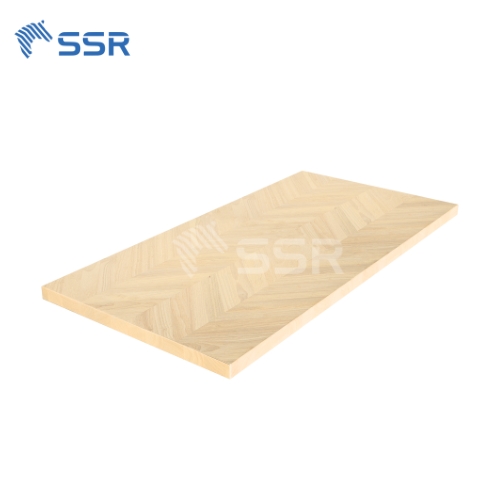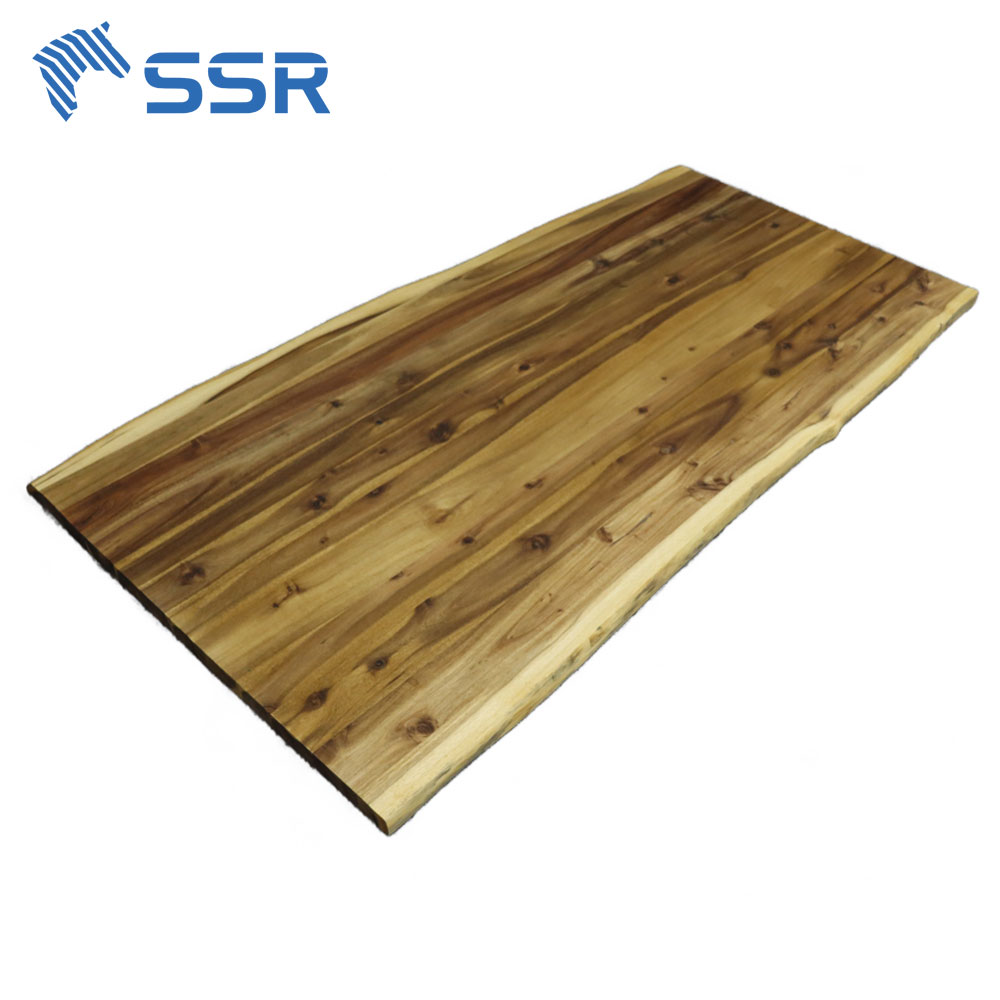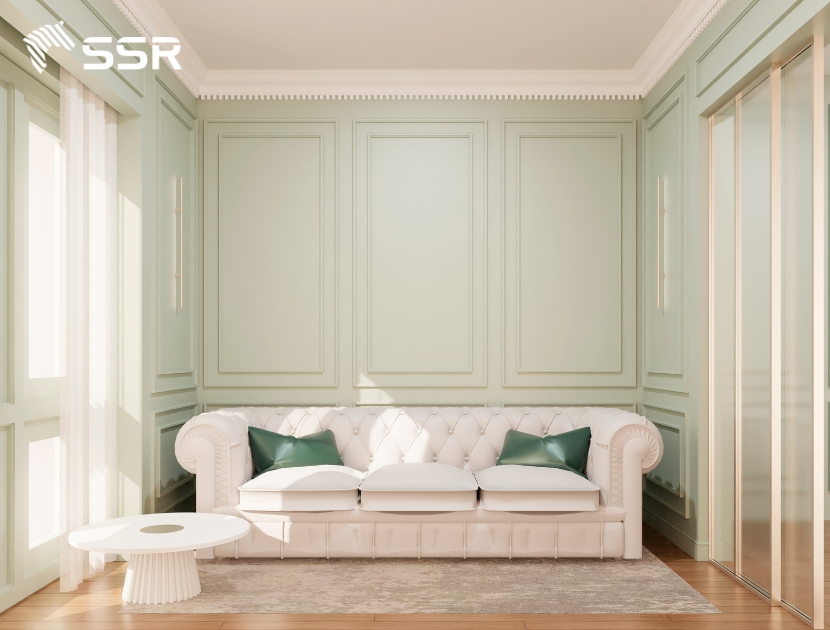NEWS
In former times, the sapele tree was applied in the Tam Cam story with the incarnation of the image of Ms. Tam, spreading its canopy to shade the king, and then making a loom to weave cloth. Today, sapele wood continues to be inherited in the furniture industry.

Learn about sapele wood
- Origin
Sapele has the scientific name Prunus arborea, a flowering plant belonging to the Rosaceae family. Originating from Southeast Asia, scattered in secondary and primary forests, distributed in many parts of the world including Vietnam, Indonesia, Malaysia, Singapore, and Thailand. In Vietnam, sapele trees are most concentrated in Binh Thuan and Dong Nai.
- Characteristic
This is a large, straight tree with an average height of 20 – 15 m with a diameter ranging from 40 – 50 cm, often growing in mountainous areas with altitudes of 400 – 600 m. The tree’s canopy is high, the leaves are small, and the purple-white flowers grow in clusters.
Sapele wood is classified in group VI, a very popular light wood type. When cut longitudinally, mountain vein patterns can be seen stacked on top of each other.
Suggest the advantages and disadvantages of sapele wood
Young leaves and bark of the apple tree can extract essential oils, and the leaves and fruits of the apple tree are also used as raw materials in the production of biological pesticides. In particular sapele wood produces veneer and peeled boards, as well as making household furniture, including wooden doors, tables and chairs, kitchen cabinets, etc. The advantages and disadvantages of this type of wood will be suggested, most important for application in the furniture industry.
- Advantage
- Beautiful color and wood grain: Sapele wood has a variety of natural colors, creating a warm and unique beauty (light yellow is the main color; the reddish-pink color resembles the rare and precious Dalbergia Odorifera wood). The ability of wood to change color over its lifespan is a great choice for interior design in many different styles. The wood grain is very even, clear, and straight, and the wood surface is soft and smooth.
- Good durability and bearing capacity, heat resistance, and water resistance: Highly appreciated for its durability, resistance to large pressure, and high temperatures, good water resistance makes it suitable for use in applications that require high safety.
- Minimize warping: Sapele wood is less prone to warping and shrinking when exposed to changing climatic environments, helping to ensure the stability of the product during use.
- Easy to process: Sapele wood has moderate hardness, and is easy to manipulate and process, allowing the creation of interior products with high precision and exquisite details.
- Reasonable price: This is considered a cheap natural wood, so when choosing it in interior design, you will reduce worries about material costs.
- Disadvantages
- Limited termite resistance: The heartwood cannot resist decay, so the sapwood is susceptible to termite attack, requiring the use of preservatives to protect the wood.
- Color fades over time: It is necessary to use a surface coating to increase aesthetics and protect the product. In addition, proper storage such as avoiding strong impacts and high humidity is also important so that the product can be used for a long time.
- The scent is somewhat unpleasant: The sap layer makes fresh wood have a slight stink and unpleasant smell. However, going through a rigorous drying process can help eliminate wood toxins.
Application of Sapele wood in the interior
Sapele wood produces tables, chairs, kitchen cabinets, wardrobes, shoe cabinets, and beds,… becoming an impressive highlight for the living space of those who own this high-end furniture product. Sapele wood can also be used to design outdoor interiors such as gardens, gates, and wooden floors,… challenging all weather conditions.
With countless advantages and insignificant disadvantages, sapele wood is still a popular choice in furniture production and is familiar to users. Open living space means freedom in choosing different wood materials to diversify material sources, making life new and richer.
Featured Products
Durable Rubberwood Chevron Countertop For Kitchen Tabletop
Specification:
- Wood Species: Rubberwood (Hevea brasiliensis)
- Moisture: <12 %.
- Length & Width Tolerance: 0/+3 millimeters.
- Thickness Tolerance: +/- 0.2 millimeters.
- Glue: D4.
- Surface Finish: Oil coating or sanding 240-320 grit.
- Quality: AA, AC, BC, or customized
- Packing: PE plastic for each piece.
[Good Promotion] Acacia Chevron Countertop Made In Vietnam
Specification:
- Moisture: < 12%
- Stave Length: 150-400 mm
- Stave Width: 20-80 mm
- Length & Width Tolerance: 0/+3 mm
- Thickness Tolerance: +/- 0.2 mm
- Glue: D4
- Quality: AB, AC, BC, or customized
- Surface Finish: Sanding 180-240 grit, both faces.
Top Quality Acacia Edge Glued Countertop Made In Vietnam
Specification:
- Moisture: 8 -12 %
- Stave Length: 150-400 mm
- Stave Width: 20-80 mm
- Length & Width Tolerance: 0/+3 mm
- Thickness Tolerance: +/- 0.2 mm
- Glue: D4
- Quality: ABC, AC, or customized
- Surface Finish: Sanding 180-240 grit, both faces
Featured News
Related News
Crown Moulding for B2B Projects: Installation & Bulk Supply
Crown moulding (cornice) is more than just an architectural detail. It’s a timeless element that bridges wall and ceiling, transforming a room with subtle sophistication. Whether you’re a homeowner looking to elevate your space or a builder seeking premium finishing touches for your next project, crown moulding brings unmatched value in both form and function. In […]

How Many Types of Moulding Trim? An Essential B2B Guide
Moulding trim plays a vital role in interior finishing – bringing together form, function, and refined detail. Whether you’re sourcing materials for large-scale residential projects or customizing high-end commercial interiors, understanding the different types of skirting boards, baseboards, crown moulding, and casing trims is essential. This guide breaks down the most common moulding trim profiles […]


 Tháng 7 3, 2024
Tháng 7 3, 2024 | SSR
| SSR
![[Good Promotion] Acacia Chevron Countertop Made In Vietnam](https://ssr.vn/wp-content/uploads/2024/12/chevcounter-3.png)



